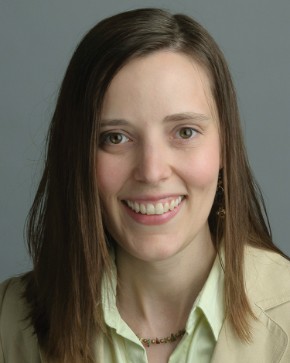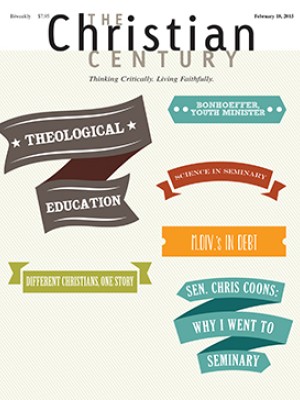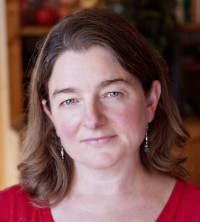Scientists and seminarians: Theologian Lea Schweitz

Last year the Templeton Foundation announced that it would give $1.5 million in grants to ten seminaries for the purpose of bringing science into the theological curriculum. The Lutheran School of Theology at Chicago, which has received other Templeton grants in support of its Zygon Center for Religion and Science, has already launched an effort to embed science in the teaching of core subjects. Lea Schweitz is professor of theology at LSTC and director of the Zygon Center.
Why did the seminary decide to embed science throughout the curriculum?
We sensed that familiarity with science is necessary for emerging church leaders. The church is changing rapidly, and much of that change is due to the way that science and technology enter our daily lives.
When we proposed the project, it was a real challenge to find room in the curriculum amid all the other demands of the M.Div. program. Students didn’t have time for electives. We are in the process of fashioning a new curriculum, but the principle remains: we’ve decided to embed a discussion of religion and science in the classes students are already taking.
Read our latest issue or browse back issues.
This approach gives religion and science a kind of core effect across the curriculum. Students hear the refrain in many of their classes—Christian education, Bible, systematic theology. It is an organic part of their education.
The module approach also allows the faculty to model lifelong learning. If you are teaching Bible, you are probably not also a cognitive scientist. So faculty model an engagement with things beyond their expertise, and I think that is necessary for church leaders.
What kinds of topics do you cover?
We went to faculty members to ask for their help in thinking about topics. We asked, “What kinds of questions have your students brought to you that you would like resources to address?”
One example comes from a biblical studies class. The professor asked, “Given scientific method and empirical modes of knowledge production, what can we say about miracles?”
We invited in a radiation oncologist, Gayle Woloschak, who is Greek Orthodox and has thought about the way she does science and reads the Gospels. (She is also associate director of the Zygon Center.) She didn’t offer final answers, but she opened a conversation that otherwise might not have happened.
In a class on pastoral care, we did a module with a brain researcher at the Alzheimer’s Association. The class typically talks about how a person’s relationship with God is challenged and compromised when memory is challenged and compromised. The researcher was able to provide the latest research on the brain and aging: what happens to the aging brain and the bounds of memory.
In a Christian education class we brought in someone to talk about reading in a technological age—what happens with the brain when it engages texts, and what is different when the text is encountered on a screen rather than a printed page.
We have 16 of these modules. They cover a wide range of issues. Because we’ve been engaging questions of religion and science for a long time, we have a broad sense of what the needs of the church really look like.
What is the ultimate goal of this effort?
In part, we are reacting against the wider culture that seems to think that religion and science are in conflict. We are eager to model different kinds of engagement.
Some studies suggest that one reason young people are not interested in church is because they perceive churches to be dismissive of or in conflict with science. This poor relationship between religion and science is undercutting a generation of potential churchgoers. Church leaders of the future are going to need to be more responsive to scientific findings and questions than they are now.
We have seen that when you do science and religion well, you can bring out the best in one’s theology. It can open a creative and transformative space.
Can you give an example of science bringing out the best in theology?
In the conversation about memory and Alzheimer’s, the research opened up a question about the nature of a self. In people suffering from Alzheimer’s, one’s deepest sense of self is eroded. You don’t have the same access to the “you” that you were. That opened up a question about whether one needs a narrative sense of self to be in a relationship with God. It opened a horizon of hope both theologically and pastorally.
What are the challenges of integrating science into a seminary curriculum?
Many questions come up around hermeneutics: how to sensitively engage the authority of scripture and how to maintain contact with tradition—particularly Lutheran tradition, in our case. Another consistent challenge is the pace of science—staying on top of what is happening and being able to ask credible questions of the scientists who come to us.
The discourse of science is so different from the discourse of theology. How do you get the two disciplines to talk to each other?
The temptation, of course, is to let religion and science run on parallel tracks. That is why it is so important to have working scientists in our dialogue.
One of the upcoming modules looks at artificial intelligence and human intelligence and how to understand the difference. One of the scientists I contacted on this said, “I don’t know why you think I have anything to say to you.”
We often have to reassure scientists that we really want to hear their best science. And then we have to do the work of making the connection. There is a lot of translation and interpretive work that has to be done at our end. We try not to let the theology be too superficial or the science too popularized.
What does a fruitful give-and-take look like?
When researchers come to us, they often get questions that they don’t get in other contexts. Conversation with students of theology gives researchers a perspective and a different kind of context for their work. And sometimes there are practical benefits as well.
In the case of the Alzheimer’s Association, the researcher said, they want to come because clergy and church leaders are often on the front lines of identifying the first signs of Alzheimer’s.
What do you hope your students will be able to do in ministry as a result of this training?
We think the training will be important in all kinds of areas. For example, in Christian education, we hope that these students will be able to engage issues of science for confirmation students and that they won’t put up barriers unintentionally.
In the field of preaching, we want our students to be able to engage scripture and science in ways that are not simplistic. Scientific metaphors find their way into daily life, and we want students to be able to think about them critically and responsibly. And to speak prophetically about things like myths of genetic determinism—to respond with critical cultural engagement when assumptions are made.
In pastoral care, we want students to be able to walk with congregants through every stage of life and to know how to help a family seek help. They don’t have to be the experts, but maybe they can help people know when the experts need to be called.
We’d like them to be able to think deeply about the role that technology is going to play in their ministries.






